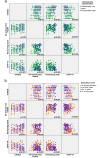Translation and validation into Spanish of the oral health self-efficacy scale in Chilean older adults
- PMID: 38245718
- PMCID: PMC10799359
- DOI: 10.1186/s12903-024-03889-4
Translation and validation into Spanish of the oral health self-efficacy scale in Chilean older adults
Abstract
Background: Population ageing poses a challenge to improving the well-being of older adults, particularly in terms of oral health. Promoting self-efficacy in oral health behaviours is crucial for maintaining this population's health and quality of life. The Oral Health Self-Efficacy Scale (OHSES) has been widely used to assess dental self-efficacy and is considered comprehensive and reliable. However, there is a need to validate OHSES for Spanish-speaking older adults. This study aimed to assess the reliability and validity of the translated questionnaire for use in the older Chilean population.
Methods: A sample of 188 older adults, aged 60 years and above residing independently in the community, were recruited by accessing databases from the National Senior Citizen Service and various community organisations within the region of La Araucanía. The participants underwent comprehensive oral examinations and oral health interviews, focusing on variables such as OHSES, Oral health-related quality of life (OHIP-14Sp), assessment of remaining teeth, knowledge and attitudes toward oral health, and sociodemographic characteristics. The validity of the translated questionnaire was assessed through translation and cross-cultural adaptation, cognitive debriefing, and face and content validation. The psychometric properties of the questionnaire were evaluated through measures of internal consistency (Cronbach's alpha), content validity (Content validity index), construct validity (factor analysis and Pearson correlation analysis), and test-retest reliability (intraclass correlation).
Results: The Spanish version of OHSES demonstrated adequate face and content validity. The confirmatory factor analysis confirmed a two-factor scale with 7 items for a better fit. The scale demonstrated high internal consistency (Cronbach's alpha = 0.821) and acceptable test-retest reliability (ICC = 0.411). Correlations were found between the OHSES score, the number of remaining teeth, knowledge and attitudes towards oral health, and the OHIP-14Sp (p < 0.01).
Conclusions: This study confirms the validity of the Spanish version of the Oral Health Self-Efficacy Scale for older adults in Chile. The scale is expected to be helpful in assessing self-efficacy in dental interventions and collecting data for international comparisons. This research opens new dimensions in patient-reported assessment of oral health.
Keywords: Ageing; Oral health; Patient-reported outcomes; Psychometric validation; Self-efficacy.
© 2024. The Author(s).
Conflict of interest statement
Financial interests: The authors declare they have no financial interests. Non-financial interests: R.M is a Senior Editorial Board Member for BMC Oral Health and receives no compensation as member of the board. Remaining authors declare that they have no competing interest.
Figures



References
-
- Petersen PE, Ogawa H. Promoting oral Health and Quality of Life of Older people - the need for Public Health Action. Oral Health Prev Dent. 2018;16(2):113–24. - PubMed
-
- World Health Organization. Global oral health status report: towards universal health coverage for oral health by 2030. 2022.
-
- McGrath C, Suen RP, McKenna G, Moore C, Wong MC. Oral health and successful ageing - the PROS and dPROS: a scoping review. J Evid Based Dent Pract. 2022;22(3). - PubMed
Publication types
MeSH terms
LinkOut - more resources
Full Text Sources
Medical

